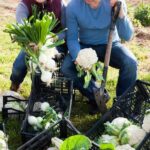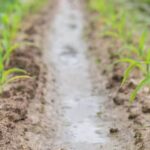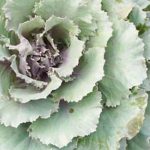Rhubarb, a perennial plant known for its tart flavor and vibrant red stalks, has long been a topic of debate among gardeners and food enthusiasts alike. Is it a vegetable or a fruit? This article will delve into the history, identification, benefits of growing, planting and caring for rhubarb in your garden, as well as harvesting and preserving tips, delicious recipes, and the essential tools and equipment you’ll need to grow this versatile plant in your own backyard.
The history of rhubarb dates back thousands of years to China, where it was initially cultivated for its medicinal properties before making its way to Europe and eventually North America. In ancient times, rhubarb was used as a laxative and for various ailments due to its high fiber content. Today, it is primarily enjoyed in culinary dishes such as pies, jams, and sauces.
When it comes to identifying rhubarb as a vegetable or fruit, the answer may surprise some. While commonly thought of as a fruit due to its use in sweet desserts, rhubarb is actually classified as a vegetable botanically. Its stalks are edible but its leaves are toxic due to high levels of oxalic acid. Despite this classification, rhubarb is often prepared and eaten as a fruit in culinary applications.
The History and Origins of Rhubarb
Rhubarb has a long and fascinating history that dates back to ancient times. It is believed that the plant originated in Asia, particularly in the regions of China and Tibet, where it was initially cultivated for its medicinal properties. Rhubarb eventually made its way to Europe along the Silk Road, where it gained popularity both as a medicinal herb and as a culinary ingredient.
The first recorded use of rhubarb as a food item dates back to 2700 BC in China, where it was primarily used for its purgative properties. However, it wasn’t until the 18th century that rhubarb began to be cultivated for its unique flavor and used in culinary applications. In fact, rhubarb became so popular in Britain during this time that it was referred to as “the fruit of kings”.
Today, rhubarb is grown and enjoyed by people all over the world, with its cultivation extending beyond Asia and Europe to North America and other regions. Its rich history as a medicinal herb and an essential ingredient in cooking has solidified its place as a versatile plant enjoyed by many cultures. Whether classified as a vegetable or a fruit, there’s no denying that rhubarb’s journey from ancient Asia to modern gardens has been nothing short of remarkable.
- The origins of rhubarb
- Cultivation of rhubarb in ancient times
- Rhubarb’s journey from Asia to Europe and beyond
Identifying Rhubarb
Rhubarb is a unique plant that often leaves people puzzled as to whether it is a vegetable or a fruit. In order to understand the debate, it’s important to first take a closer look at the characteristics of rhubarb and how it is classified in the world of plants.
Rhubarb: A Vegetable?
Despite its appearance and common culinary use, rhubarb is technically considered a vegetable. The edible part of the plant that is used in cooking is actually the stalk, which meets the botanical definition of a vegetable. Additionally, rhubarb is grown from perennial crowns which are planted in the ground like other vegetables.
Rhubarb: A Fruit?
On the contrary, in 1947, a US custom court decided that since rhubarb was used in the same manner as fruit in culinary dishes, it would henceforth be classified as such for taxation purposes. This decision has led to some confusion as to whether rhubarb should be classified as a fruit instead.
Regardless of its classification, what’s clear is that rhubarb can be enjoyed in both sweet and savory dishes, making it an incredibly versatile ingredient to have in your garden. Whether you view it as a vegetable or fruit, growing rhubarb at home can be a rewarding experience for any gardener.
The Benefits of Growing Rhubarb in Your Garden
Rhubarb is a versatile and nutritious plant that can easily thrive in your garden. Whether you consider it a vegetable or a fruit, there is no denying the numerous benefits of growing rhubarb in your own backyard. Here are some reasons why you should consider adding this plant to your garden:
- Nutritional Value: Rhubarb is rich in vitamins K and C, as well as fiber, calcium, and other essential nutrients.
- Low Maintenance: Rhubarb plants are relatively low maintenance and can thrive in various climate conditions with the right care.
- Versatile Uses: From pies and jams to savory dishes, rhubarb can be used in a wide range of recipes, making it a valuable addition to any garden.
- Longevity: Once established, rhubarb plants can continue to produce for many years, providing a reliable source of fresh produce for your home.
Whether you have an extensive garden or limited space, rhubarb is a great addition to any gardening setup. Its versatility and nutritional value make it a valuable asset for any gardener looking to add both flavor and functionality to their outdoor space.
In addition to its uses in the kitchen, rhubarb also offers aesthetic appeal with its large leaves and vibrant stalks. It can enhance the visual appeal of your garden while also providing you with a bountiful harvest throughout the growing season. With these benefits in mind, it’s clear that incorporating rhubarb into your garden can be a rewarding and worthwhile endeavor.
Step-by-Step Guide to Planting and Caring for Rhubarb
When it comes to planting and caring for rhubarb, it’s important to first understand whether this versatile plant is a vegetable or a fruit. Despite its common use in desserts, rhubarb is actually considered a vegetable due to its origins and culinary uses. However, it is often prepared and enjoyed as a fruit in various recipes.
To start growing your own rhubarb, you will need to select a suitable location in your garden. Rhubarb thrives in well-drained soil with plenty of sunlight. It is also important to choose the right variety of rhubarb for your climate and growing conditions. Once you have selected the perfect spot, you can proceed with planting your rhubarb crowns, which are the root structures of the plant.
Caring for rhubarb involves regular watering, especially during dry periods, as well as fertilizing the soil to promote healthy growth. Rhubarb plants should be spaced at least 3 feet apart to allow for adequate air circulation. Additionally, it’s crucial to remove any flower stalks that develop to redirect the plant’s energy towards producing larger edible stalks. With proper care and attention, your rhubarb plants will thrive and provide an abundant harvest for years to come.
| Rhubarb Care | Value |
|---|---|
| Watering | Regular watering during dry periods |
| Fertilizing | Fertilize the soil for healthy growth |
| Spacing | Plants should be spaced at least 3 feet apart |
Harvesting and Preserving Rhubarb
Rhubarb is a unique plant that has long been a topic of debate when it comes to its classification as a vegetable or a fruit. This debate is primarily due to its culinary use in sweet dishes, despite being botanically classified as a vegetable. However, regardless of whether rhubarb is considered a vegetable or fruit, one thing is for certain: it is a popular addition to many gardens and can be enjoyed in a variety of delicious recipes.
Harvesting and preserving rhubarb is an essential part of maintaining a successful rhubarb garden. The best time to harvest rhubarb is in the spring when the stalks are firm and crisp. It’s important to cut the stalks at ground level, being careful not to damage the crown of the plant. When harvesting, it’s recommended to leave at least one-third of the stalks on the plant to ensure that it continues to thrive.
Once harvested, there are several methods for preserving rhubarb to enjoy throughout the year. One popular method is freezing rhubarb, which allows it to retain its flavor and texture. To freeze rhubarb, simply wash and cut the stalks into small pieces before placing them in an airtight container or freezer bag.
Another common preservation method is canning, which involves cooking the rhubarb with sugar and packing it into jars for long-term storage. Regardless of the preservation method chosen, having fresh rhubarb on hand ensures that you can enjoy its unique flavor all year round.
Delicious Rhubarb Recipes
Rhubarb is a versatile ingredient that can be used in a wide variety of recipes, from sweet to savory. Whether it’s pies, jams, or even savory dishes, rhubarb adds a unique and tangy flavor that can elevate any dish. In this section, we will explore some delicious rhubarb recipes that you can easily make at home.
Rhubarb Pie
One of the most classic and beloved ways to use rhubarb is in a pie. The tartness of the rhubarb contrasts perfectly with the sweetness of the filling, creating a perfectly balanced dessert. Whether you prefer a traditional double-crust pie or a crumble topping, there are countless variations to choose from when making a rhubarb pie.
Rhubarb Jam
Another popular way to preserve and enjoy rhubarb is by turning it into jam. Rhubarb jam has a unique flavor that pairs well with both sweet and savory dishes. Spread it on toast for breakfast, swirl it into yogurt for a nutritious snack, or use it as a glaze for meats and vegetables.
Savory Rhubarb Dishes
While rhubarb is often associated with sweet treats, it can also be used in savory dishes. Its tartness makes it an excellent addition to chutneys, sauces, and marinades. For example, try using chopped rhubarb in a barbecue sauce for grilled meats or incorporate it into a spicy salsa for fish tacos.
Whether you’re baking up a storm in the kitchen or experimenting with new savory recipes, rhubarb is sure to add an unexpected twist to your culinary creations. With its unique flavor profile and versatility, it’s no wonder that rhubarb remains a favorite ingredient among food enthusiasts around the world.
Rhubarb Garden
In conclusion, whether rhubarb is considered a vegetable or a fruit may remain a topic of debate, but its appeal as a versatile and delicious ingredient cannot be denied. Its rich history and origins have contributed to its popularity as an addition to any garden. With the proper tools and equipment, cultivating rhubarb can be a rewarding experience for any gardener.
The benefits of growing rhubarb in your garden are numerous. Not only does it provide a bountiful harvest, but it also offers a unique flavor that can be used in a variety of culinary creations. From pies to jams, there are countless delicious recipes that showcase the versatility of this plant.
With a step-by-step guide to planting and caring for rhubarb, anyone can successfully grow this perennial plant in their garden. By following tips for harvesting and preserving rhubarb, you can enjoy its bounty throughout the year. So whether you consider it a vegetable or a fruit, adding rhubarb to your garden is sure to be a fruitful endeavor.rhubarb vegetable or fruit gardena.

If you’re looking to get into vegetable gardening, or are just looking for some tips on how to make your current garden better, then you’ve come to the right place! My name is Ethel and I have been gardening for years. In this blog, I’m going to share with you some of my best tips on how to create a successful vegetable garden.





